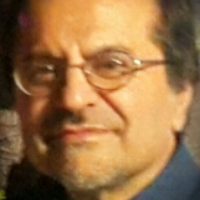From Process review to product realization: towards a gradual approach to the urban design process
Although more than half a century has passed since the academic birth of urban design, it still suffers from ambiguities in theory and practice. Questions emerge such as the following. Can urban design be a definite discipline? Is urban design independent of urban planning, architecture, and landscape architecture? What is the role of urban design in the real world, and what is the final product? What is the appropriate process and the main toolboxes? Answers to these questions must be part of the common discourse of the field, definite answers to clarify all the ambiguities.
Despite these ambiguities, urban design continues to be considered as an intellectual tradition. It plays a significant role in everyday human life, and remains a subject matter in many studies. In recent years, many urban projects have sought to create noble environments for people while providing economic benefits for the private sector and local governments. Some research has attempted to evaluate such projects. The results point to the fact that many such projects have failed to accomplish their stated goals. Theoretically, this appears to be the result of a theory-practice dichotomy.However, there has been a gap in comprehensive research since the 1990s on the urban design process. Although several different parameters affect the implementation of designed projects, the urban design process may play a significant role in the end product. Hence, the question is what could be the relationship between the urban design process and on-the-ground project realization? A complementary question is whether we can manipulate the urban design process to achieve the stated design goals and realize the projects as intended. To answer these questions, we first present a literature review on the urban design process and then discuss the results of our examinationof some implemented projects to find clues about how to handle the urban design process and solve the theory-practice dichotomy of urban design itself.Urban design ambiguities can influence the urban design process as its central procedural dimension, which has implemented projects as its results. Although different parameters cooperate to make it troublesome to utilize a project, all designs are affected by the urban design process. Thus, the question concerns the relationship between the urban design process and project realization. It is also unknown whether we can manipulate the urban design process to ensure the realization of projects. In addition, based on the theory-practice dichotomy, we need to know whether the evaluation of urban design projects and their realization can give us a clue as to how to handle the urban design process. Therefore, we attempt to resolve theoretical ambiguity in urban design by examining some real-world projects. Here, we assume that the urban design process can also transfer theoretical ambiguities to real-world practice as a medium that canalizes theoretical knowledge to practice.
The research addresses many unknown topics and undefined parameters. Thus, it may not be possible to develop a specific theoretical framework with a clear list of measurable criteria to meet the research goals through a classified research method. Our literature review leads to a framework that points to a relationship between the subject matters. This framework is not exhaustive because our research does not rely on quantitative measurements and focuses on experience with the subject. Therefore, the study is restricted to qualitative research. Due to the uncertainties about the topics, a theoretical interpretation is made of the literature based on qualitative research to develop a framework for an experimental approach to the issue. Content analysis and action research lead us to calibration of the framework. The result provides an ultimate configuration for a practical framework which can be an a priori model which can be calibrated to an ultimate model by experience. Such an experience clarifies the parameters and their relationships through direct contact with the research domain. Therefore, a model is created for the urban design process after the literature review, applicable to examination of operational experience. Finally, we observe that the process is not an ultimate one but can help us find an ultimate one based on the iteration of the a priori model.Here, the case study addresses the master plan for the Abbasabad region in Tehran. We use this project as the subject of our content analysis. The project is examined through the documents, i.e., reports, administrative correspondences, and proceedings, based on the meetings of cultural and technical committees. The documents are analysed in MaxQda. The keywords used in the software include project, realization, process, ratification, Article 5 Commission, master plan, specific plan, implementation, and construction. After the first search in the documents, the useless words are eliminated, and the search is carried out again for their classification. The results are analyzed interpretively. Next, another project–i.e., design of the southern Kan area–is used as a case study implemented on the ground.
The generalization of the incremental process can be explained theoretically, but the experimental proof requires more cases and several, repeated experimental applications of the process. Practical application of the process can calibrate the framework to a more realistic one. The result of the theoretical explanation is that the general format of the process can change over time to turn to a complete model, other models, or derivations of the present model. In fact, a model is generated after the literature review calibration of which through experimental research leads to a design process.
The incremental process, as proposed in this paper, needs to be tested over time. The relationship between practice and implementation can be recognized through direct experimentation with the incremental process. However, the relationship between.
- حق عضویت دریافتی صرف حمایت از نشریات عضو و نگهداری، تکمیل و توسعه مگیران میشود.
- پرداخت حق اشتراک و دانلود مقالات اجازه بازنشر آن در سایر رسانههای چاپی و دیجیتال را به کاربر نمیدهد.



